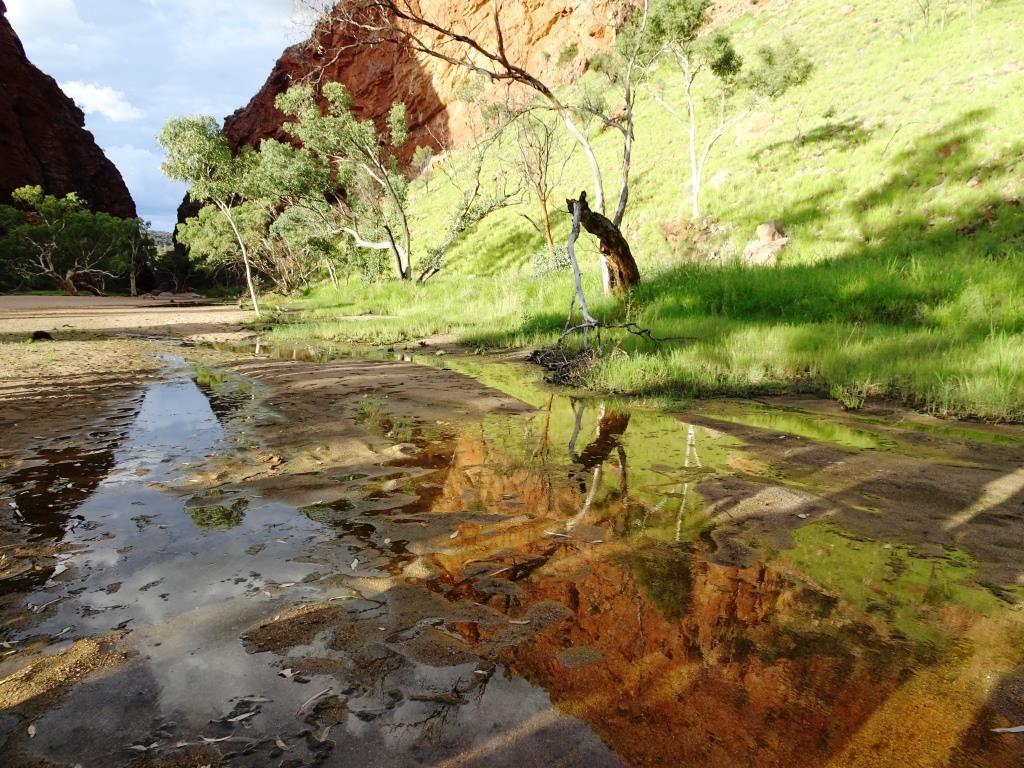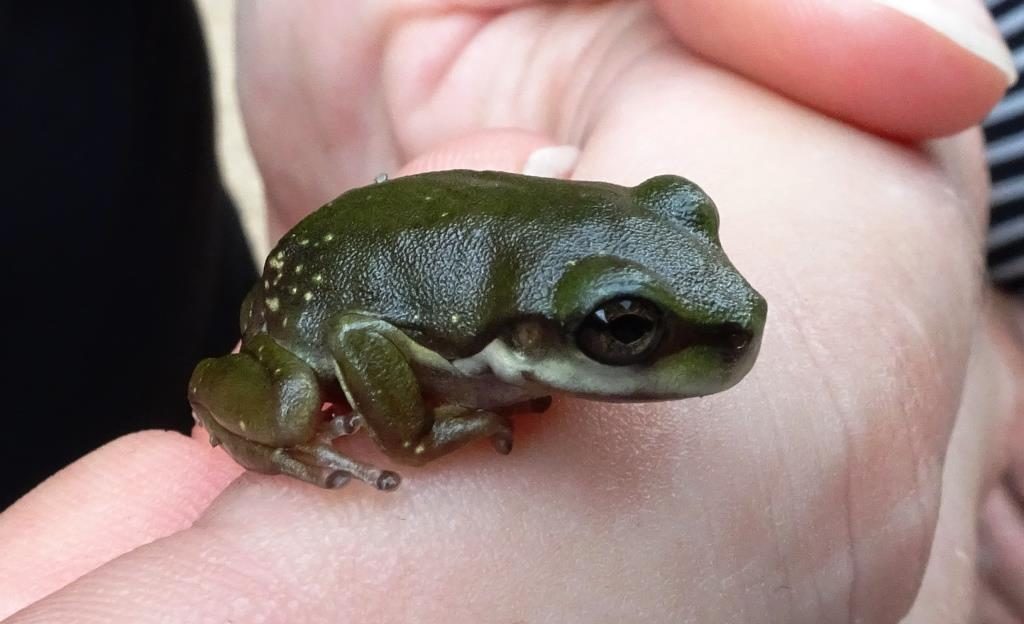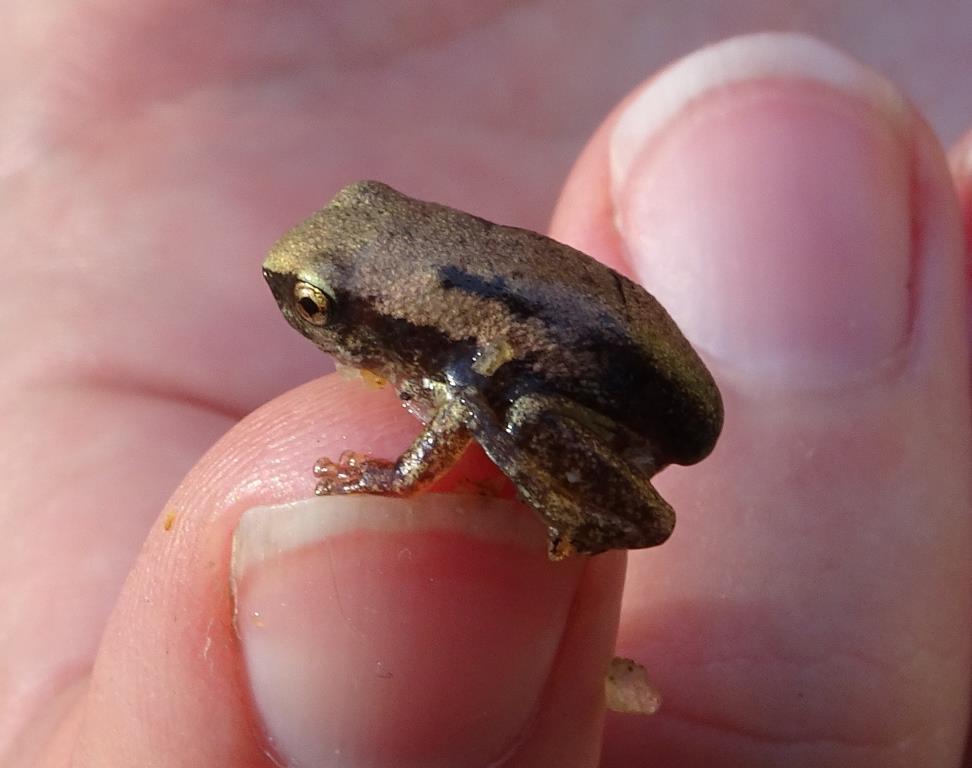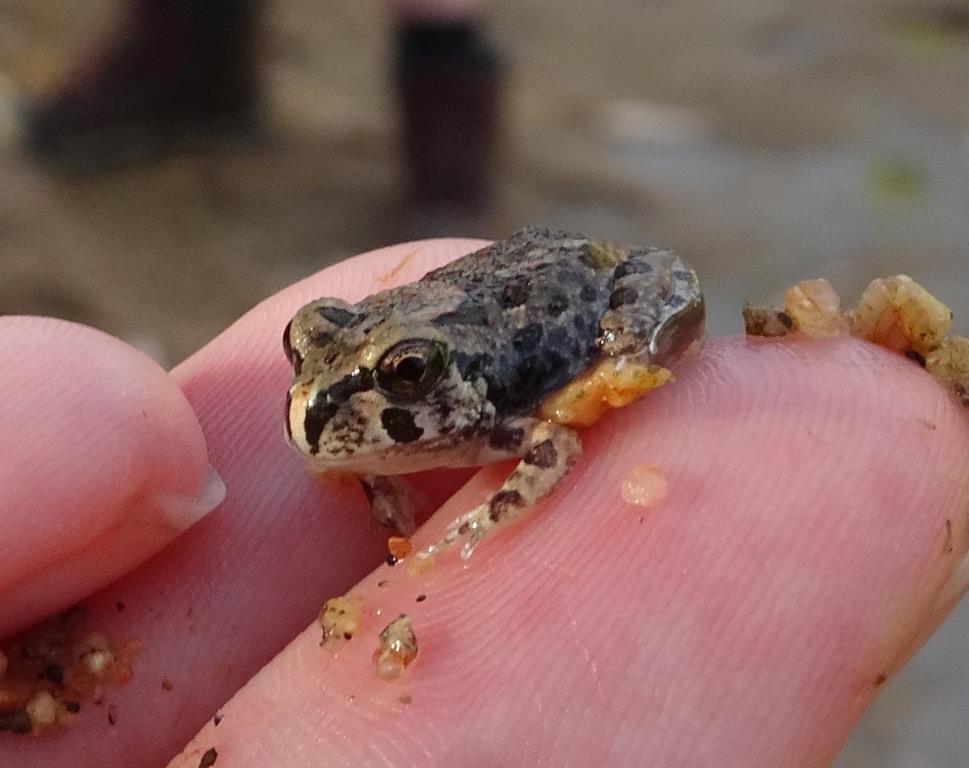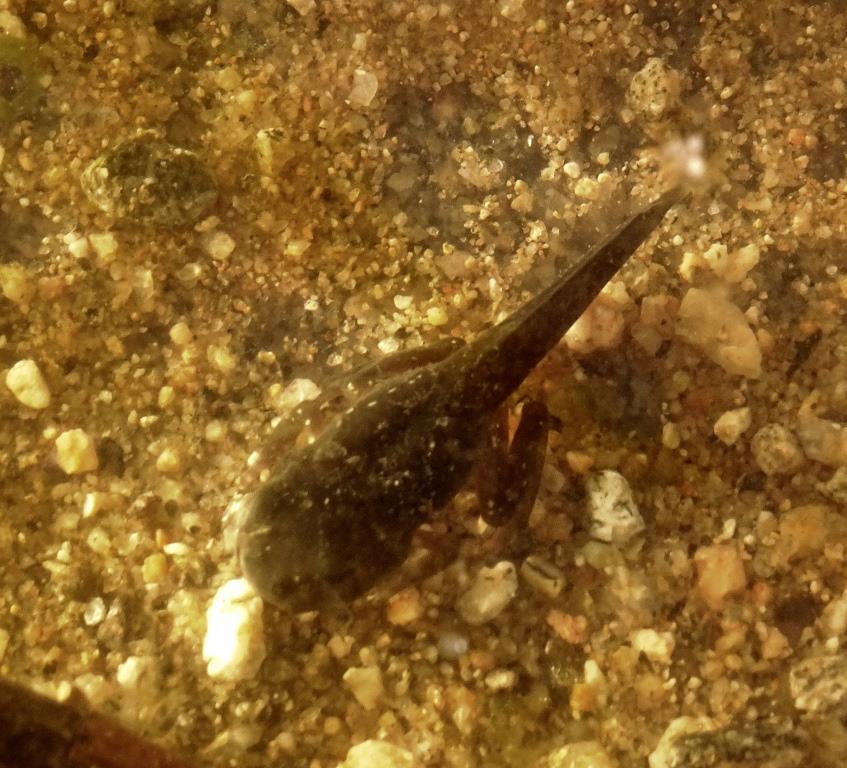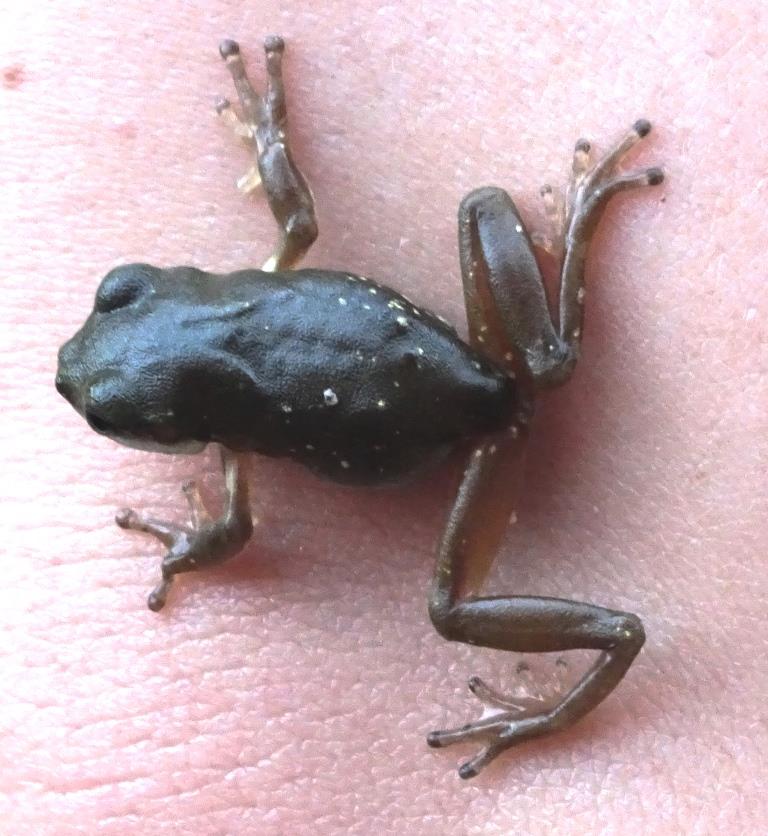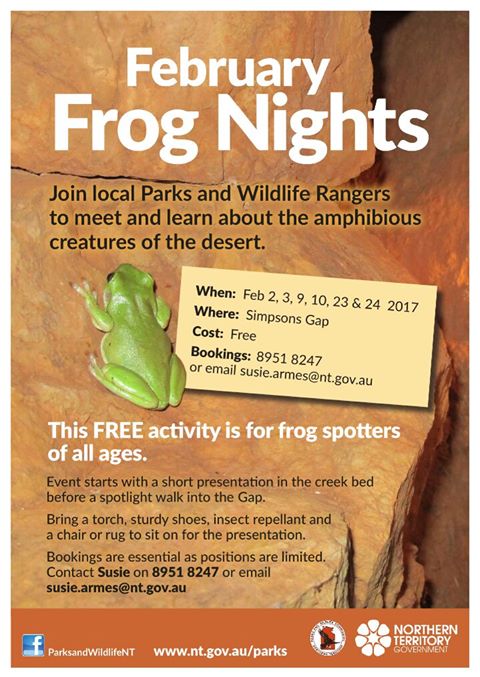Land for Wildlife went along to the Territory NRM World Wetlands Day Event on February 1st at Simpsons Gap and were delighted to see all the frogs that have emerged following recent rains. Three species were present at the TNRM hosted event, including the Centralian Tree Frog (Litoria gilleni), Red Tree Frog (Litoria rubella) and Spencer’s Burrowing Frog (Platyplectrum spenceri). The Centralian Tree Frog is distinguished by its green colour and white spots on the back, while the Red Tree Frog is much smaller, can be grey to brown in colour and possesses a broad black stripe running down the side of the body. Spencer’s Burrowing Frog has large and irregular splotches of dark brown on a lighter fawn body, and has a somewhat distinctive shield or plate behind the back of the head.
There are two main lineages of frogs in Central Australia, the first two species observed belong to the Family Hylidae (or tree frogs) and the third belongs to the Family Limnodynastidae (the Australian ground frogs). While Spencer’s Burrowing Frog spends most of its life underground to avoid dehydration, and emerges only for short periods after rains, the Centralian Tree Frog and Red Tree Frog are unable to burrow and climb into humid microhabitats such as crevices and tree hollows close to permanent water.
Parks and Wildlife NT are running a host of Frog Nights throughout February – get along to a session to see the diversity of amphibians in our local waterways.
To learn more about World Wetlands Day (2nd February 2017), head to http://www.worldwetlandsday.org/
Are there frogs in your yard? Want to identify them? Pick up a copy of the Land for Wildlife production ‘Reptiles and Frogs of Alice Springs’ by Nic Gambold and Deborah Metters at any of our upcoming stalls and events. To find out more about this publication head to our Books for Sale webpage.
Categories:
Amphibians, Biodiversity, Event, Native Fauna, Ponds, Territory Natural Resource Management
